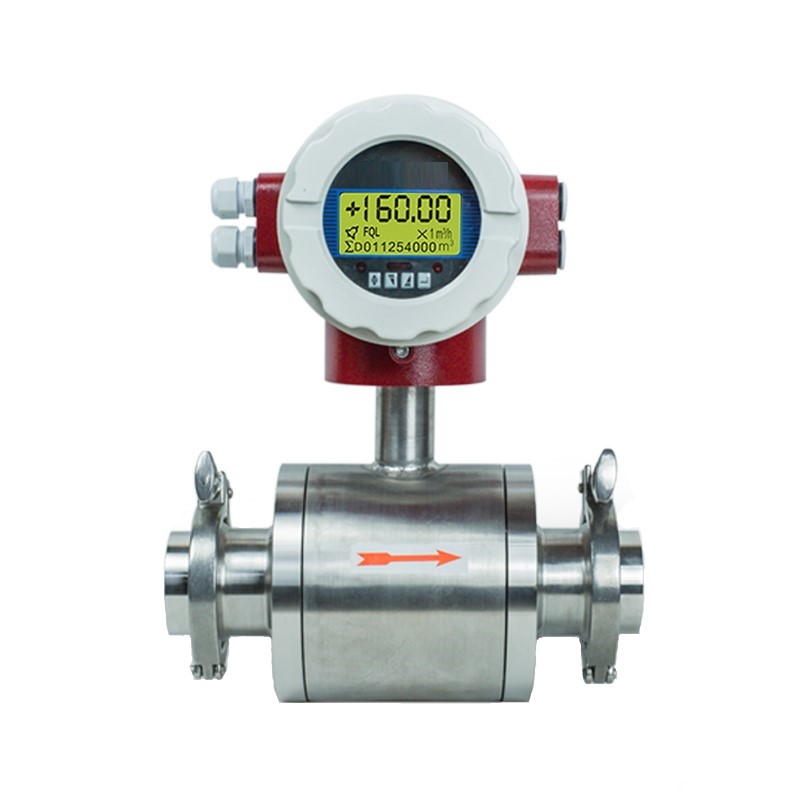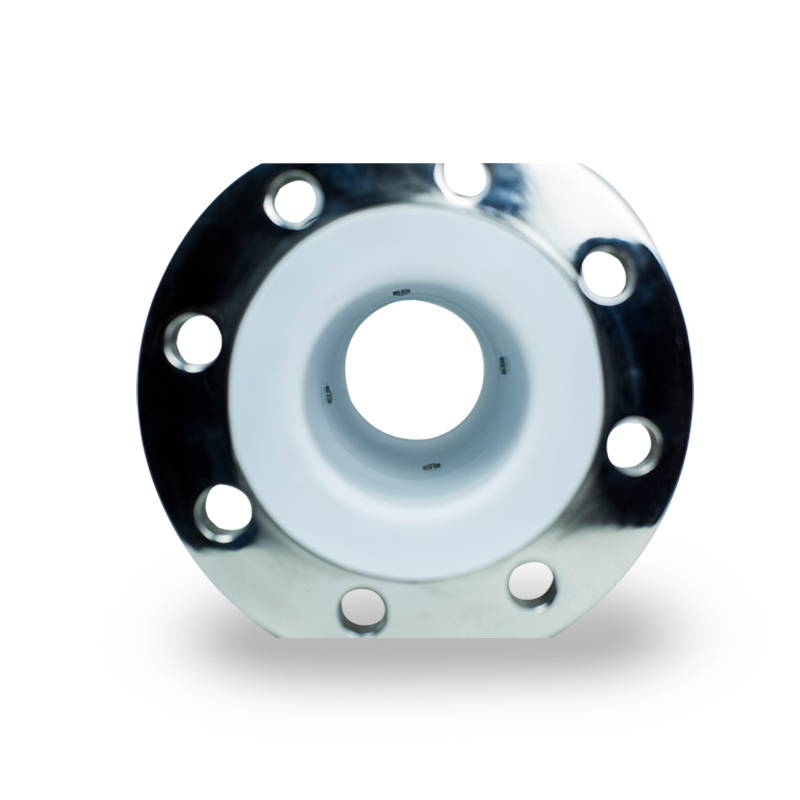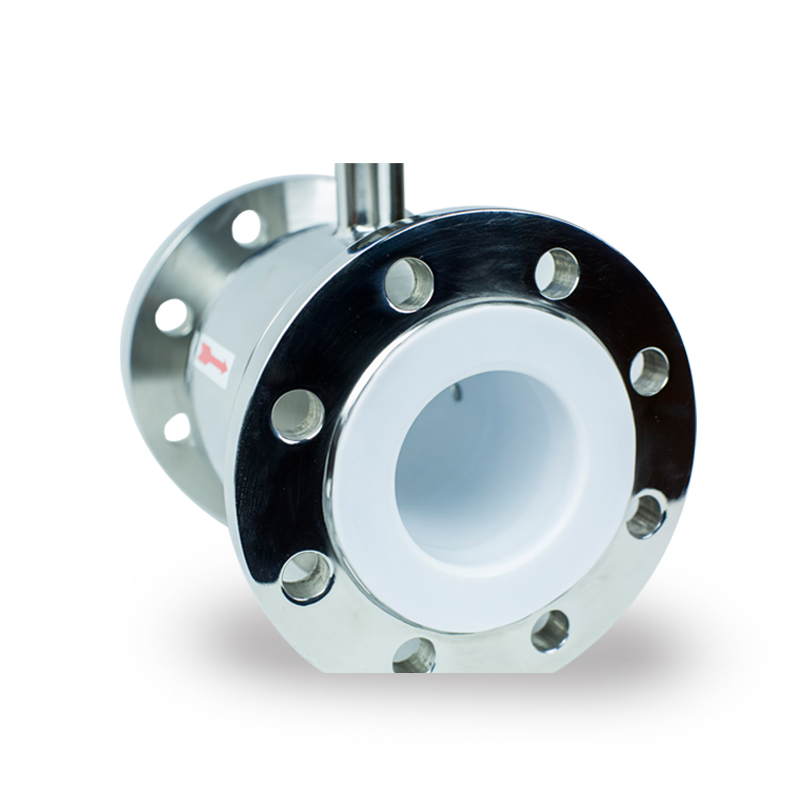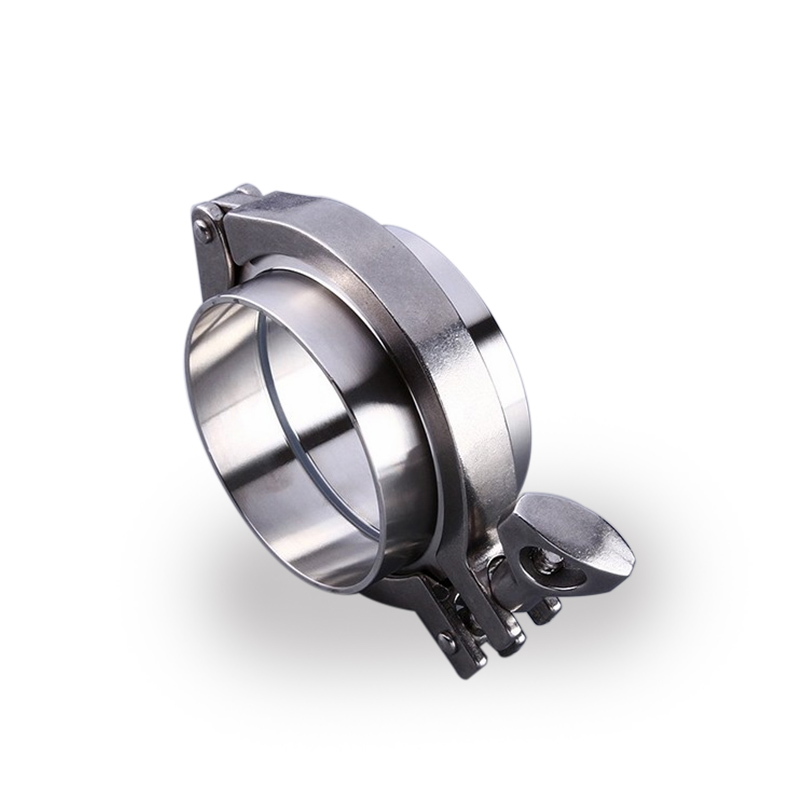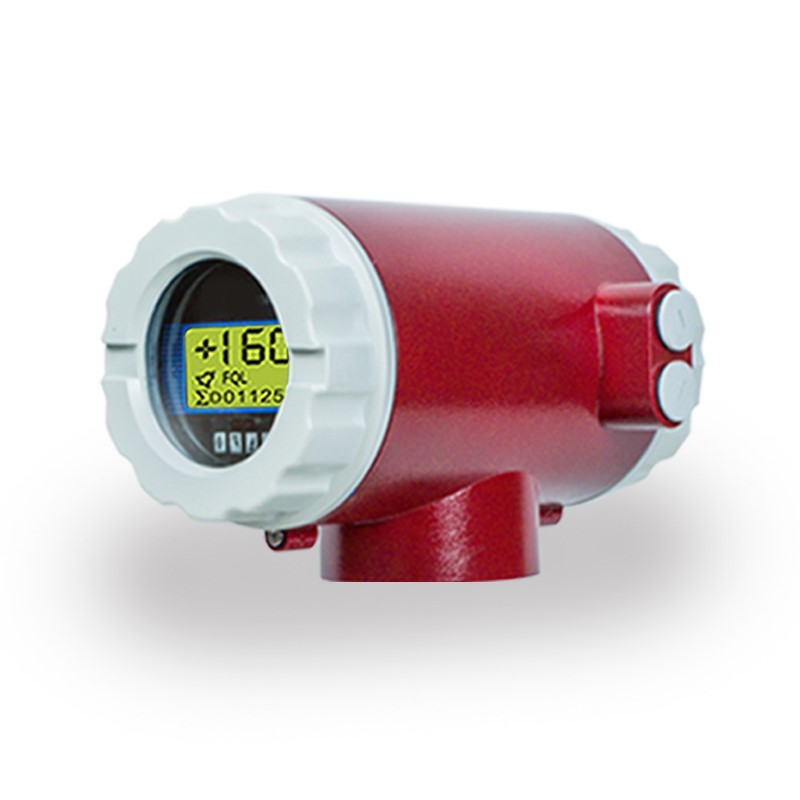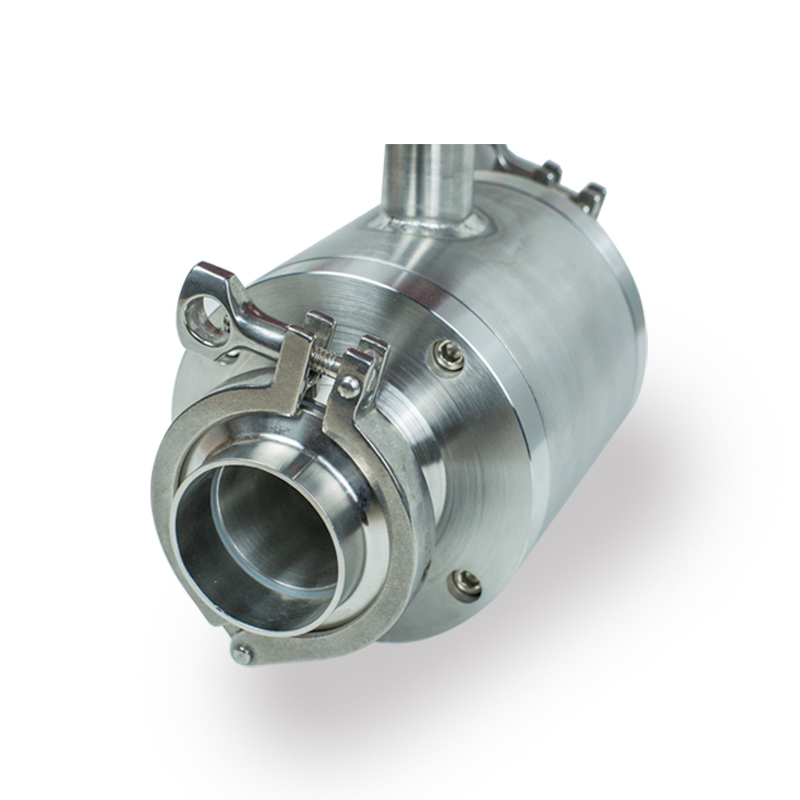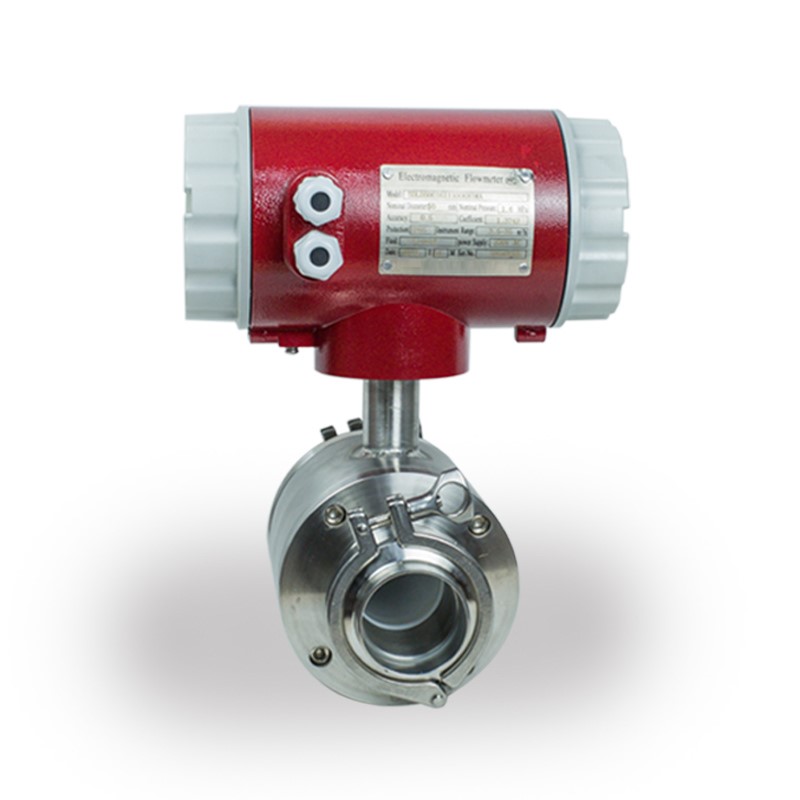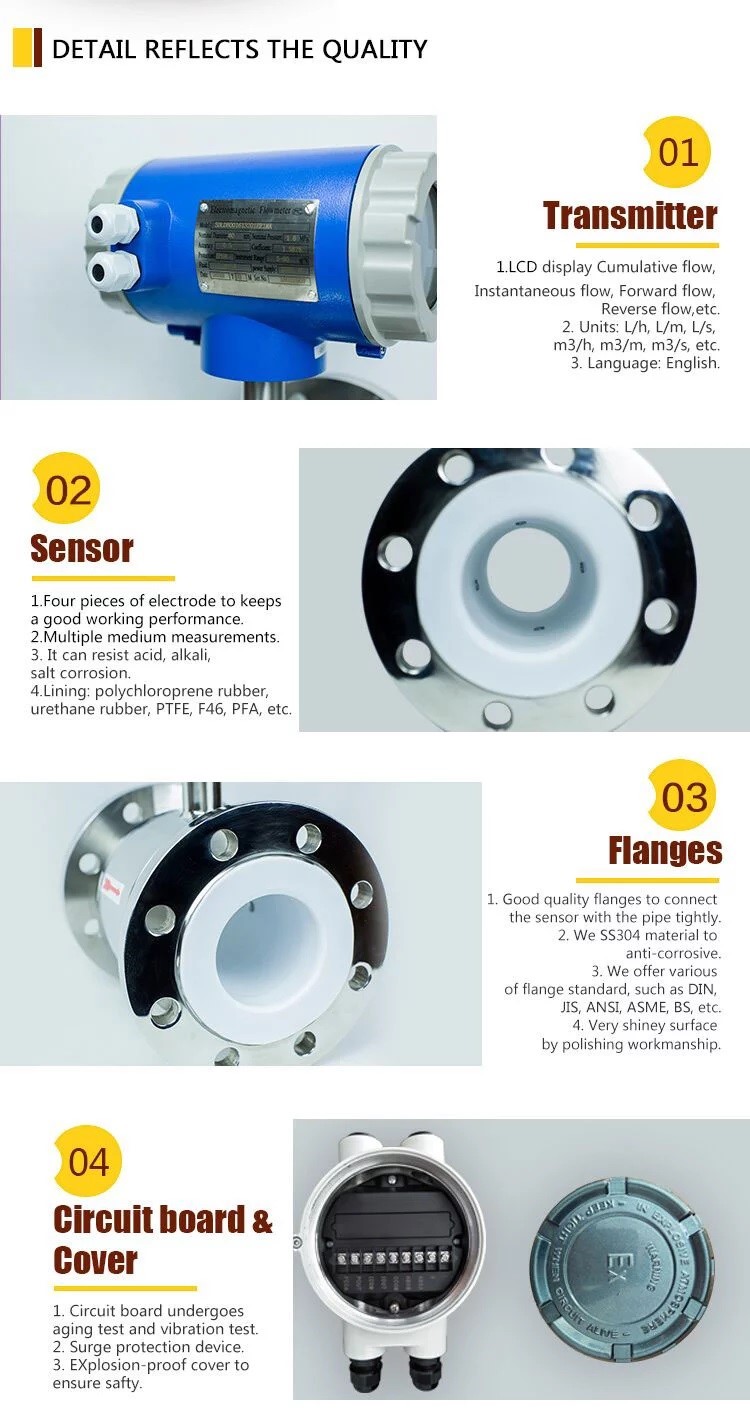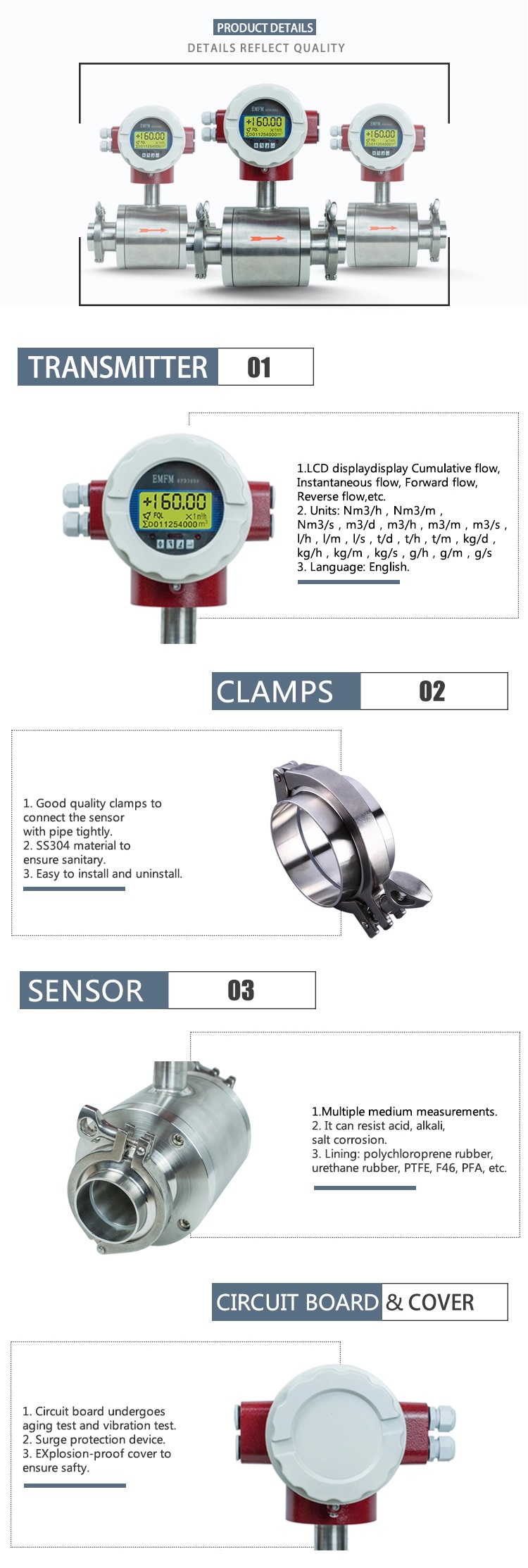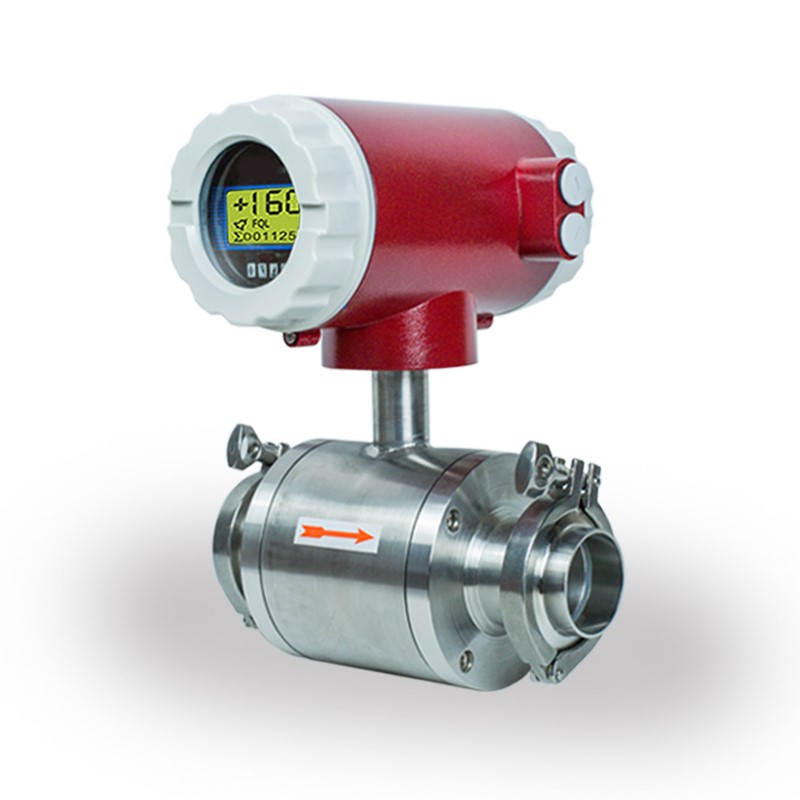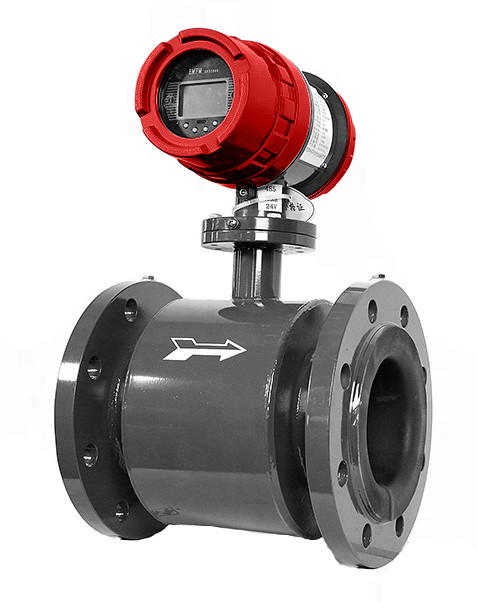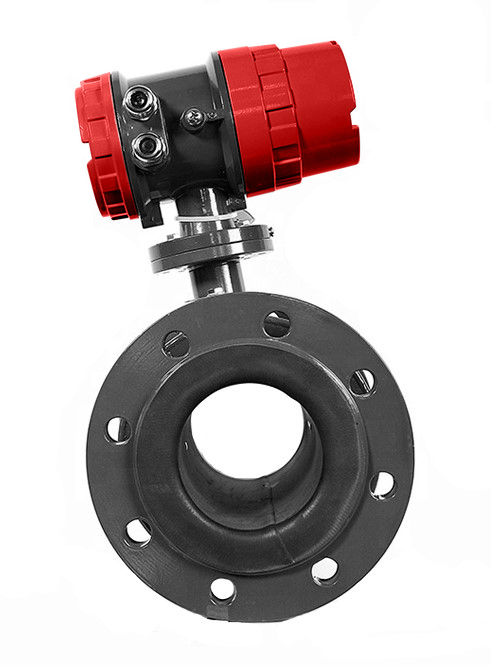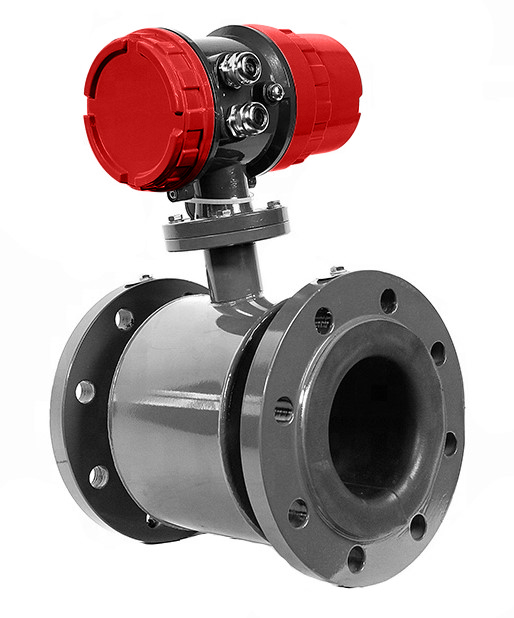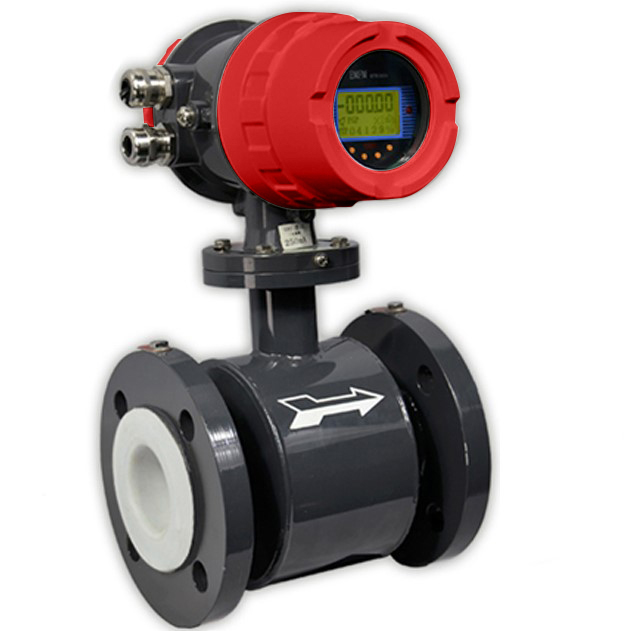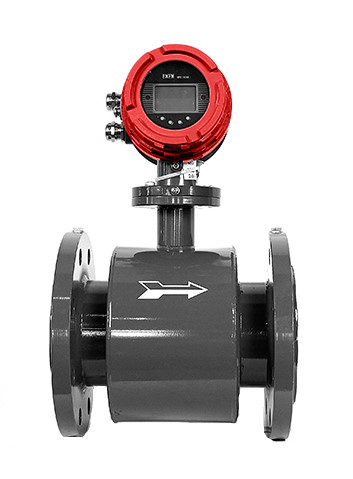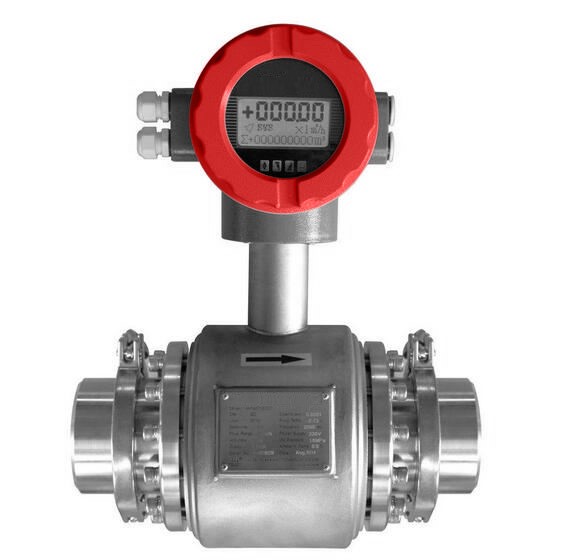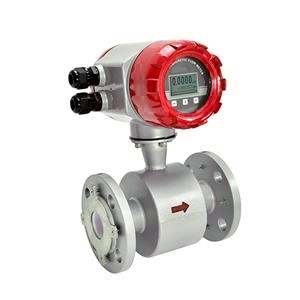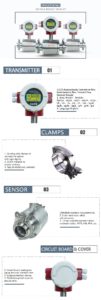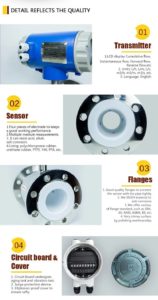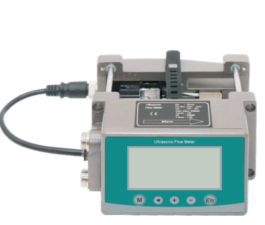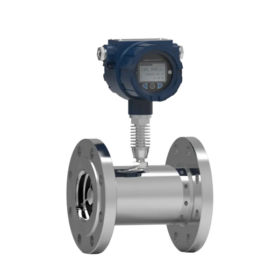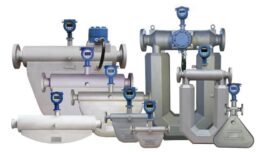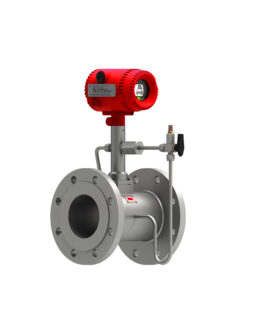Electromagnetic Flow Meters
$ 1,681.65 – $ 8,988.00Price range: $ 1,681.65 through $ 8,988.00
An electromagnetic flow meter is an advanced device used to measure the flow rate of electrically conductive liquids, slurries, and pastes. Utilizing the principles of Faraday’s Law of Electromagnetic Induction, this type of flow meter offers highly accurate and reliable measurements. When a conductive fluid passes through the magnetic field generated by coils within the meter, it induces a voltage proportional to the fluid’s velocity. Electrodes positioned along the pipe’s walls detect this voltage, which is then converted into a flow rate reading by the meter’s electronic processing unit.
One of the primary advantages of electromagnetic flow meters is their non-intrusive nature. Unlike traditional mechanical flow meters, they have no moving parts that come into contact with the fluid, minimizing maintenance and wear over time. This design also eliminates pressure drop issues, making them ideal for a wide range of industrial applications, including water and wastewater treatment, chemical processing, and food and beverage production.
Electromagnetic flow meters can handle a variety of fluids, from clean water to highly corrosive chemicals, and are available in various sizes to accommodate different pipeline diameters. They are highly versatile, with the capability to function accurately under both low and high flow conditions. Modern electromagnetic flow meters often come equipped with advanced features such as digital displays, remote monitoring, and communication interfaces compatible with industrial control systems.
Overall, the electromagnetic flow meter is a robust, precise, and durable solution for measuring flow rates in diverse applications, providing reliable data essential for process control and optimization.
Description
Electromagnetic flow meters, commonly known as mag meters, are a type of flow meter that uses the principles of electromagnetism to measure the flow rate of conductive fluids. These devices are widely used in various industries, including water and wastewater treatment, chemical processing, food and beverage, and pharmaceuticals, due to their accuracy, reliability, and versatility. Here, we’ll explore the principles, construction, operation, advantages, disadvantages, and applications of electromagnetic flow meters in detail.
Principles of Operation with Electromagnetic Flow Meters
The fundamental principle behind electromagnetic flow meters is Faraday’s Law of Electromagnetic Induction. According to this law, when a conductive fluid flows through a magnetic field, it generates a voltage proportional to the flow velocity. The system measures the generated voltage and uses it to determine the fluid’s flow rate.
In electromagnetic flow meters, are a pair of coils generates a magnetic field perpendicular to the direction of fluid flow. As the conductive fluid passes through this magnetic field, electrodes positioned orthogonally to the magnetic field and fluid flow detect the induced voltage. This voltage is directly proportional to the flow velocity of the fluid.
Construction of Electromagnetic Flow Meters
An electromagnetic flow meter typically consists of the following components:
Flow Tube
The flow tube is the part of the meter through which the fluid flows. Manufacturers usually make it from non-magnetic and non-conductive materials such as stainless steel or PVC, or line it with materials like PTFE to prevent corrosion and ensure compatibility with different types of fluids. The inside surface of the flow tube must be smooth to minimize friction and prevent the buildup of deposits.
Electromagnetic Coils
These coils are responsible for generating the magnetic field. Furthermore, installers typically mount them around or integrate them into the flow tube. When an electric current passes through the coils, it creates a magnetic field that interacts with the flowing fluid.
Electrodes
Place electrodes at opposite points inside the flow tube to detect the voltage induced by the moving conductive fluid. In addition, you choose the electrode material based on the chemical properties of the fluid to prevent corrosion and ensure long-term reliability.
Converter/Transmitter
The converter or transmitter processes the voltage signal detected by the electrodes. Also, it amplifies and converts this signal into a readable flow rate, typically displayed on an LCD screen. The transmitter also allows for data communication with control systems and other monitoring devices, providing outputs such as 4-20 mA signals, pulse outputs, or digital communication protocols like HART or Modbus.
Operation
When the electromagnetic flow meter is in operation, the following steps occur:
Magnetic Field Generation: The electromagnetic coils generate a magnetic field that penetrates the flow tube and the fluid within it.
Fluid Flow: As the conductive fluid flows through the magnetic field, it induces a voltage.
Voltage Detection: The electrodes positioned inside the flow tube detect this induced voltage.
Signal Processing: The detected voltage is sent to the converter, which processes the signal to determine the fluid’s flow rate.
Output and Display: The flow rate is then displayed on the meter’s display and can also be transmitted to external systems for monitoring and control.
Other meters that may suit your application better:
Coriolis Flow meters
Variable Area Flow Meters
Specifications
Electromagnetic Flow Meter Specifications
| Application | Velocity Range (FT/S) | Velocity Range (M/S) |
| Normal Service | 0-39 | 0-12 |
| Preferred Service | 2-20 | 0.6-6.2 |
| Abrasive Slurries | 3-11 | 0.9-6.5 |
| Non-Abrasive Slurries | 5-15 | 1.5-4.6 |
Conductivity Chart
| Fluid Type |
Conductivity |
Suitability for Electromagnetic Flow Meters |
| Water (Fresh) |
High (0.1 to 1,000 µS/cm) |
Suitable |
| Water (Saltwater) |
Very High (>1,000 µS/cm) |
Suitable |
| Brine |
Very High (>1,000 µS/cm) |
Suitable |
| Acids (e.g., sulfuric acid) |
High (varies by concentration) |
Suitable |
| Alkalis (e.g., sodium hydroxide) |
High (varies by concentration) |
Suitable |
| Chemicals (e.g., hydrochloric acid) |
High (varies by concentration) |
Suitable |
| Pulp and Paper Slurries |
Varies (typically high) |
Suitable (with appropriate lining and electrodes) |
| Food and Beverage (e.g., fruit juices) |
Moderate to High (0.1 to 1,000 µS/cm) |
Suitable |
| Milk |
Moderate to High (0.1 to 1,000 µS/cm) |
Suitable |
| Paints and Coatings |
Varies (often high) |
Suitable (with specific considerations for buildup and abrasion) |
| Petroleum Products |
Low to Moderate (0.1 to 10 µS/cm) |
Generally unsuitable unless additives are present to increase conductivity |
| Organic Solvents |
Low (typically <1 µS/cm) |
Generally unsuitable |
| Deionized Water |
Very Low (<0.1 µS/cm) |
Not suitable |
Notes:
- Conductivity Range: The table provides general ranges for fluid conductivity. Specific values can vary based on concentration and temperature.
- Suitability: Fluids with very low conductivity may not provide sufficient measurement accuracy for electromagnetic flow meters. In such cases, additional considerations or alternative flow measurement technologies might be required.
Installation
Preparation:
- Read Manual: Thoroughly read the manufacturer’s manual and safety instructions.
- Check Parts: Ensure all components are present and undamaged.
- Tools Needed: Gather necessary tools (wrenches, screwdrivers, pipe fittings, sealant, etc.).
Installation Steps:
- Select Installation Site:
- Choose a straight section of pipe with sufficient upstream and downstream straight pipe lengths as specified in the manual.
- Ensure the site is free from electromagnetic interference and excessive vibrations.
- Prepare Pipe:
- Clean the pipe section where the flow meter will be installed.
- Cut the pipe, ensuring the ends are straight and free of burrs.
- Install Grounding Rings:
- If required, install grounding rings on both ends of the flow meter to ensure proper grounding and accurate measurements.
- Install Flow Meter:
- Position the flow meter in the correct orientation (check flow direction arrow on the meter).
- Insert the flow meter between the pipe ends. Use appropriate gaskets to ensure a tight seal.
- Secure the meter with flange bolts or appropriate pipe fittings, tightening them evenly to avoid stress on the meter body.
- Connect Electrical Wiring:
- Follow the wiring diagram in the manual to connect power and signal cables.
- Ensure all connections are secure and properly insulated.
- Ground the meter according to the manufacturer’s instructions to prevent electrical noise interference.
- Check Installation:
- Verify that all connections are tight and secure.
- Ensure that there are no leaks at the pipe joints.
- Calibration and Setup:
- Power up the flow meter and follow the manufacturer’s instructions for initial calibration.
- Set up the flow meter parameters such as pipe diameter, fluid type, and flow range.
- Perform a zero-point calibration if required.
- Test the System:
- Gradually introduce the fluid flow into the system.
- Check the flow meter readings for accuracy and ensure they are stable.
- Verify that there are no leaks or abnormal noises.
- Finalize Installation:
- Once the flow meter is functioning correctly, secure all wiring and connections.
- Document the installation, including location, date, and initial calibration settings.
Maintenance:
- Regularly inspect the flow meter for signs of wear, corrosion, or damage.
- Periodically verify calibration and perform recalibration as needed.
- Clean the electrodes and internal components according to the manufacturer’s recommendations.
By following these steps, you can ensure a proper installation of your electromagnetic flow meter, leading to accurate and reliable flow measurements.
Maintenance
Regular maintenance of an electromagnetic flow meter ensures accurate measurements and extends the device’s lifespan. Below are detailed maintenance procedures to keep the flow meter in optimal working condition.
Monthly Maintenance
- Visual Inspection:
- Check the flow meter and its surrounding area for signs of leaks, corrosion, or physical damage.
- Ensure that the meter is securely mounted and all connections are tight.
- Signal and Power Check:
- Verify that the power supply and signal cables are securely connected.
- Check for any signs of wear or damage to the cables and connectors.
Quarterly Maintenance
- Cleaning Electrodes:
- If the fluid being measured is prone to leaving deposits, clean the electrodes to prevent buildup. Follow the manufacturer’s cleaning procedures, typically involving mild cleaning agents or specific cleaning solutions.
- Grounding Check:
- Inspect grounding connections to ensure they are intact and providing a good electrical ground. Tighten any loose connections.
Semi-Annual Maintenance
- Calibration Verification:
- Compare the flow meter readings with a known reference standard to verify accuracy.
- Recalibrate the meter if necessary according to the manufacturer’s instructions.
- Firmware/Software Updates:
- Check for any firmware or software updates provided by the manufacturer.
- Install updates to ensure the flow meter is operating with the latest improvements and bug fixes.
Annual Maintenance
- Complete System Inspection:
- Shut down the flow system following the proper procedures.
- Remove the flow meter from the pipeline and inspect the internal components for wear, corrosion, or buildup.
- Replace any worn or damaged parts as recommended by the manufacturer.
- Full Calibration:
- Perform a comprehensive calibration of the flow meter.
- Use calibration equipment and procedures specified by the manufacturer to ensure accuracy.
As-Needed Maintenance
- Troubleshooting Errors:
- If the flow meter displays error codes or abnormal readings, refer to the troubleshooting section of the manual.
- Common issues may include air bubbles in the fluid, electrical interference, or improper grounding.
- Replacement of Parts:
- Replace any worn or damaged parts immediately. Keep a stock of commonly needed spare parts like gaskets, seals, and electrodes.
Maintenance Log
- Maintain a detailed log of all maintenance activities, including dates, actions taken, and personnel involved.
- Record any issues encountered and the solutions applied.
- Note calibration results and any adjustments made to the flow meter settings.
Safety Precautions
- Always follow the manufacturer’s safety guidelines and local regulations when performing maintenance.
- Use appropriate personal protective equipment (PPE) such as gloves, safety glasses, and protective clothing.
- Ensure the flow system is depressurized and drained before removing the flow meter.
By adhering to these maintenance procedures, you can ensure the longevity and reliability of your electromagnetic flow meter, providing consistent and accurate flow measurements for your applications.
Q&A
A Q&A Electromagnetic Flow Meter which stands for “question and answers for Electromagnetic Flow Meter,” is a format commonly used to facilitate communication and exchange of information. In a Q&A Electromagnetic Flow Meter, one person asks a question, and another person or group provides an answer or response to that question. This format is widely used in various contexts, such as interviews, discussions, presentations, or online forums. It allows for a structured and organized way of addressing inquiries and obtaining relevant information. Is there anything specific you would like to know about Q&A Electromagnetic Flow Meter?
Q: What is an electromagnetic flow meter?
A: An electromagnetic flow meter, also known as a mag meter, is a type of flow meter that uses Faraday’s law of electromagnetic induction. This is to measure the velocity of conductive fluids, such as water or wastewater.
Q: How does an electromagnetic flow meter work?
A: An electromagnetic flow meter works by using a magnetic field to induce an electric voltage in a conductive fluid as it flows through a pipe. The voltage generated is proportional to the velocity of the fluid, which can then be used to calculate the flow rate.
Q: What are the advantages of using an electromagnetic flow meter?
A: Some advantages of using an electromagnetic flow meter include:
-
- High accuracy and repeatability
-
- No moving parts, which reduces maintenance requirements and increases reliability
-
- Can measure flow rates of conductive fluids regardless of their viscosity or density
-
- Can handle high flow rates and can be used in large pipe sizes
-
- Can measure bidirectional flow
Q: What are some common applications for electromagnetic flow meters?
A: Electromagnetic flow meters are commonly used in the water and wastewater industry for measuring flow rates in pipes and open channels. They are also used in the chemical, food and beverage, and pharmaceutical industries for measuring the flow of conductive liquids.
Q: What are some potential limitations or drawbacks of using an electromagnetic flow meter?
A: Some potential limitations of using an electromagnetic flow meter include:
-
- Can only measure the flow rate of conductive fluids
-
- Requires a conductive fluid with a minimum level of conductivity for accurate readings
-
- Can be affected by electromagnetic interference, which can lead to inaccurate readings
-
- Can be more expensive than other types of flow meters, such as ultrasonic or turbine flow meters, depending on the application
Q: Can electromagnetic flow meters be used for hazardous fluids?
A: Yes, electromagnetic flow meters can be used for hazardous fluids as long as the materials of construction are selected to be compatible with the specific fluid and the operating conditions. For example, if the fluid is corrosive, the flow meter should be constructed of a material that is resistant to corrosion.
Q: How are electromagnetic flow meters installed?
A: Electromagnetic flow meters are typically installed in a horizontal or vertical orientation, depending on the application. The flow meter is mounted in the pipe or channel, and the electrodes are inserted through the wall of the pipe or channel and positioned to be in contact with the flowing fluid. The electrodes are then connected to the transmitter, which converts the signal into a flow rate reading.
Q: How accurate are electromagnetic flow meters?
A: Electromagnetic flow meters are known for their high accuracy and repeatability, with typical accuracy levels of ±0.5% to ±1% of the flow rate. However, the accuracy can be affected by several factors, including the fluid properties. Also, the installation location, and the quality of the signal conditioning electronics.
Q: How do electromagnetic flow meters compare to other types of flow meters?
A: Electromagnetic flow meters are often compared to other types of flow meters. Various Types such as ultrasonic, turbine, and positive displacement flow meters. Each type of flow meter has its strengths and weaknesses, and the choice of Electromagnetic flow meter depends on the specific application requirements. In general, electromagnetic flow meters are preferred for applications where high accuracy, and reliability. Also, low maintenance is important, and where the fluid is conductive.
Q: How do Q&A Electromagnetic Flow Meters handle changes in fluid density or viscosity?
A: Electromagnetic flow meters are not affected by changes in fluid density or viscosity, as long as the fluid remains conductive. This is because the meter measures the velocity of the conductive fluid, which is not affected by changes in its physical properties.
Q: Can electromagnetic flow meters be used for both liquids and gases?
A: Electromagnetic flow meters are designed to measure the flow of liquids, not gases. This is because gases are not conductive, so they do not generate the electrical signal needed for the meter to work.
Q: Can electromagnetic flow meters be used in applications with high turbulence or flow disturbances?
A: Electromagnetic flow meters can be used in applications with high turbulence or flow disturbances. As a result, the installation location and configuration of the meter must be carefully chosen. This is to minimize the impact of these factors on the accuracy of the meter.
Q: How do electromagnetic flow meters handle air or gas bubbles in the fluid?
A: Electromagnetic flow meters can be affected by air or gas bubbles in the fluid. They can disrupt the conductive properties of the fluid and cause errors in the flow measurement. To address this, some meters have built-in algorithms to detect and correct the presence of bubbles. Also, others may require additional hardware, such as a bubble eliminator or a degassing unit.
Electromagnetic Flow Meter
Advantages / Disadvantages
Benefits of electromagnetic flow meters include:
High accuracy: Electromagnetic flow meters offer excellent measurement accuracy, typically within ±0.5 to 1% of the flow rate. This enables precise flow monitoring and control.
Wide range of fluid compatibility: These flow meters can handle a variety of conductive fluids, including corrosive, abrasive, and viscous liquids. They are suitable for applications across different industries.
Minimal pressure loss: Electromagnetic flow meters have a negligible pressure drop due to their full-bore design, ensuring energy efficiency and reduced operating costs.
Low maintenance: Unlike mechanical flow meters, electromagnetic flow meters have no moving parts. This reduces the need for maintenance and minimizes the risk of mechanical wear and failure.
Versatile installation options: These flow meters can be installed in various orientations. Such as horizontal and vertical pipelines, making them adaptable to different installation requirements.
Applications
Industries Served for Electromagnetic Flow Meter
Overall, electromagnetic flow meters are widely used in industries such as water and wastewater management, chemical processing, pharmaceuticals, food and beverage, and many others. Their accuracy, reliability, and ability to handle a broad range of flow rates and fluid conditions make them a popular choice for flow measurement in various applications.
Electromagnetic flow meters are commonly used in a variety of applications across industries.
Some key applications include:
Water and wastewater treatment: Electromagnetic flow meters are frequently used for measuring the flow rate of water and wastewater in treatment plants. They are highly accurate and reliable, even with fluids containing suspended solids and chemicals.
Chemical and petrochemical industry: In chemical and petrochemical processes, precise flow measurement is crucial for optimizing production and ensuring the safety of operations. Electromagnetic flow meters are widely used for measuring corrosive and hazardous fluids in this industry.
Food and beverage industry: Electromagnetic flow meters find applications in the food and beverage industry for measuring the flow rate of liquids such as milk, fruit juices, and syrups. They are hygienic, have no moving parts, and can handle fluids with solid particulates.
Pharmaceutical industry: Flow metering is critical in pharmaceutical manufacturing to ensure accurate dosing and maintain product quality. Electromagnetic flow meters are commonly used for measuring the flow rate of various liquids, including solvents, acids, and bases.
Drawings

